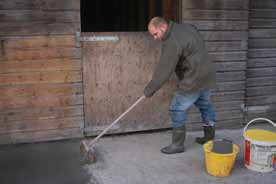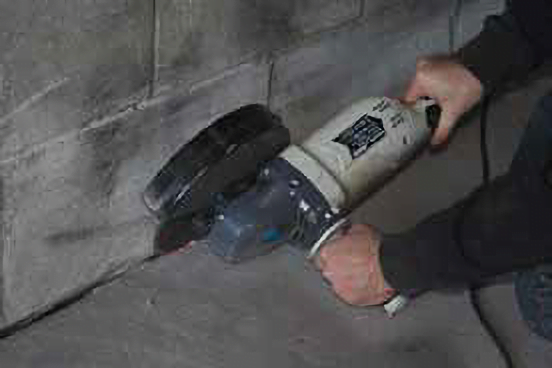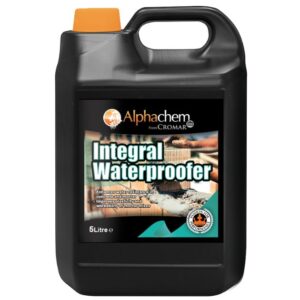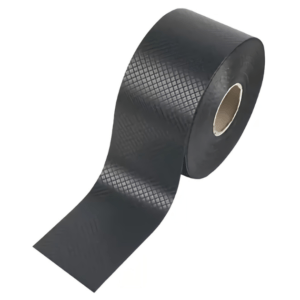Efficient and Effective Waterproofing: The Benefits of Using Tanking Slurry in Construction
So, you're looking to waterproof your property, and you might be considering a damp-proof membrane (DPM). But have you ever heard of tanking slurry? Tanking slurry is just as (if not more) effective than using a DPM and is incredibly easy to apply. It comes as a powder that only needs to be mixed with water and a bonding agent to form a paste, which can then be brushed onto walls or surfaces to create a waterproof barrier.
Once applied, the slurry forms insoluble crystals that penetrate and fill any cracks or fissures in the wall, concrete, or bricks. This creates a thick, watertight layer that completely stops water from leaking in. You'll often see tanking slurry used in basements, swimming pools, foundations, bathrooms, retaining walls, and exterior walls. One great thing about the KA Tanking Slurry is that it can be applied in one or two coats, covering around 7-8 square meters per 25kg bucket. This means even large projects can be completed quickly and efficiently by one person, reducing costs and speeding up your project timeline.
Although tanking slurry can be applied directly to concrete, blockwork, masonry, or cement renders, the manufacturer recommends using a bonding agent such as the SBR bonding agent. Applying the bonding agent before the slurry helps create a durable adhesive bond that won't re-emulsify. While it is technically possible to apply the slurry without the bonding agent, we strongly advise against it, as the manufacturer does not guarantee the installation without it.
For the best results, it should be applied evenly using a brush or roller to ensure a strong bond between the substrate and the slurry. It’s also worth noting that the manufacturer does not recommend installing tanking slurry in temperatures below -5°C.
How to Use Tanking Slurry
First, you'll want to start with a clean surface. Remove any debris, and ensure there’s no paint, oil, or other chemicals present. The tanking slurry must be applied to a porous, wet substrate that is free of contaminants. Any impurities can interfere with the slurry's adhesion.
Next, saturate the surface where the tanking slurry will be applied with water. This allows the crystalline chemicals to penetrate deep into any cracks or crevices.
Mix the tanking slurry powder with water at a ratio of 2.5:3 parts KA Tanking Slurry – for instance, 5 liters of water require 12.5-15 kg of slurry powder. Mix thoroughly until you have a smooth paste. It's important not to prepare more slurry than can be applied within 30 minutes at 20°C.
There are slight differences in application depending on whether you're working on walls or floors, so here are separate instructions for each:
Using Tanking Slurry on Walls:

As mentioned earlier, we suggest using a bonding agent like the KA Bond SBR before applying the tanking slurry. This helps the slurry bond effectively to the wall, creating an adhesive bond that won't re-emulsify. If the emulsion breaks down, the tanking slurry will lose its waterproofing properties and become ineffective.
Before applying the slurry, dilute the KA Bond SBR in a 1:1 ratio with water. Ensure it remains tacky before applying the slurry. Mechanically mix the tanking slurry and add 1 liter of KA Bond SBR for every 25kg bucket. For example, use 1 liter of KA Bond SBR with 5 liters of water.
After about 4-6 hours, it should become touch dry, and you can apply the final second coat. The slurry should be brushed, troweled, or sprayed onto the walls with an ideal thickness of 3-5mm. Apply one coat horizontally and the other vertically.
Using Tanking Slurry on Floors:


When applying the slurry to a floor, make a saw cut along the edge of the floor approximately 15mm deep at a 45° angle. This will allow the mixture to enter the corners, ensuring they are adequately tanked.
First, dilute the KA Bond SBR in a 1:1 ratio with water and apply it to the floor area. Let it sit for about 10-15 minutes to "tack over," but don't let it dry completely.
Next, mechanically mix your tanking slurry with the KA Bond SBR and pour one coat onto the floor area. Add 1 liter of KA Bond SBR for every 25kg bucket. Pour or trowel it onto the floor to a thickness of 3-5mm.
For repairing large cracks, use a 3:1 ratio of Sand:Cement mortar mixed with SBR bonding agent. This will essentially plug the cracks. Allow this to cure for at least 24 hours before applying a coat of tanking slurry. For larger areas of new brickwork, poured concrete, or cement renders, wait for 3 days before applying the slurry.
In summary, KA Tanking Slurry combined with the SBR bonding agent is the perfect solution for preventing water leakage into concrete and brick structures. It’s easy to apply and provides a strong, permanent watertight layer.
No matter if you're working on a large commercial project or a smaller residential building, whether it's new construction or renovation, KA Tanking Slurry is an excellent choice to keep your structure dry and protected, even in heavy rain.
Â
Shop Tanking Slurry:

Cromar Integral Waterproofer 5 Litre

Damp Proof Course

Damp Proof Membrane
Infrared Steam Room
Infrared Steam Room
Guangzhou Aijingsi Sanitary Products Co.,Ltd , https://www.infinityedgehottub.com